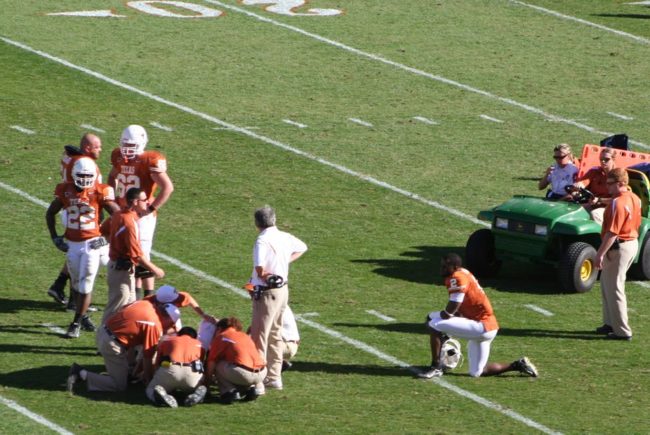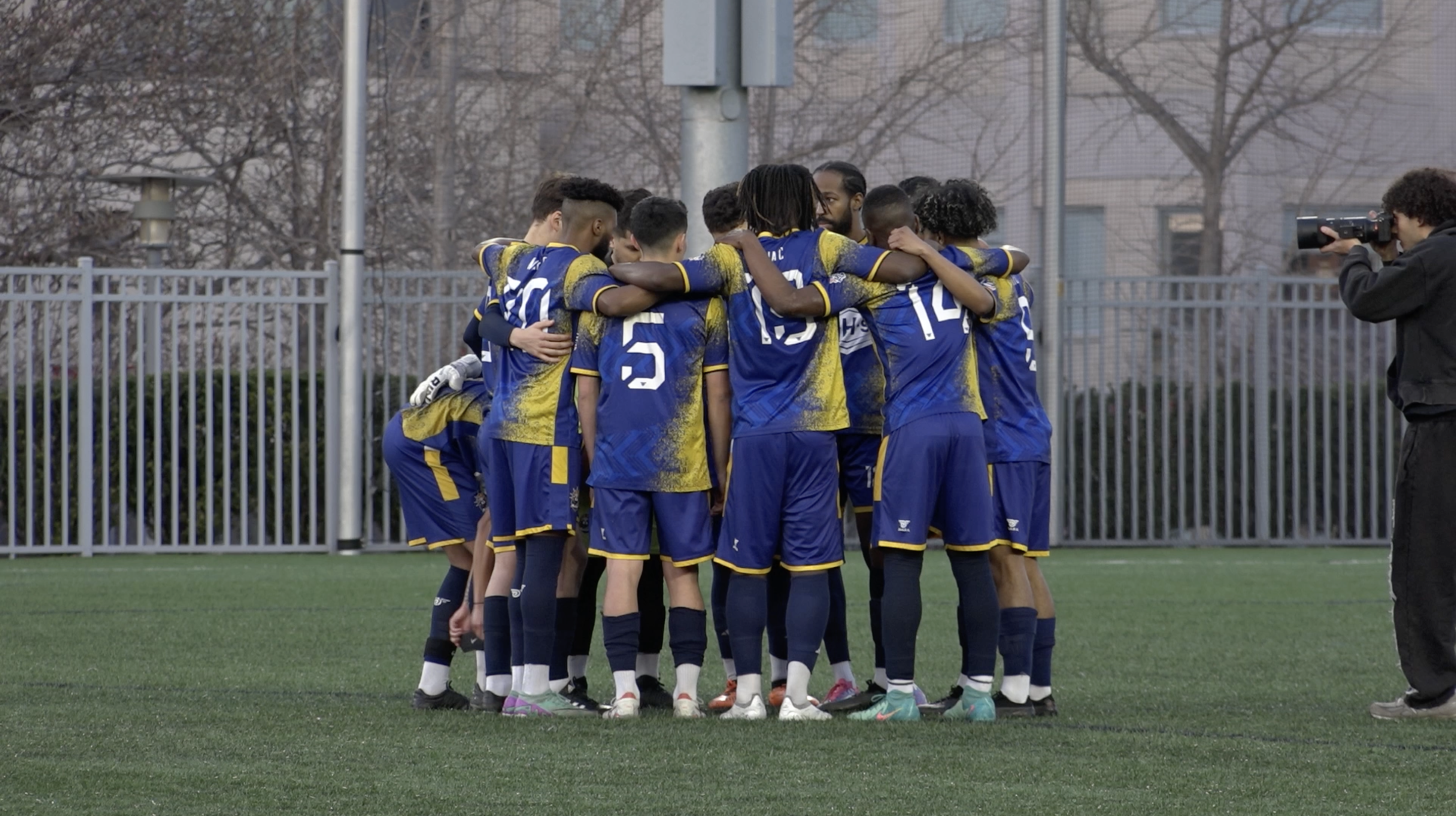Concussions are leading to a decline in high school football. Photo courtesy of Wikipedia.
Over the past three years, participation numbers in high school football have been on a steady decline. Besides the pressure of classes and extracurriculars, students have to deal with the harsh reality of concussions.
“This sport is not meant for human bodies. It’s barbaric, but people like it so not much we can do,” said Dapo Balogun of Newark, New Jersey.
According to a National Federation of High School Associations’ athletic participation survey concussions are the number one reason why participation numbers have dropped. Parents are concerned about the growing research on Chronic Traumatic Encephalopathy (CTE) and head trauma injuries that can leave damaging effects on the body.
A concussion is a traumatic brain injury that is caused by a violent force to the head or neck area. Concussions usually affect motor and memory skills, but the effects of the brain injury are temporary. Not diagnosing a concussion can lead to other serious brain effects in the long term and can lead to chronic traumatic encephalopathy, better known as CTE.
According to the National Federation of State High School Associations, 1,057,407 participated in 11 man football in 2016. In 2017, the number dropped to 1,036,842, a two percent decline from the previous. In 2016, 14,099 high schools sponsored 11 man football in 2017 the number dropped to 14,059, a 20 school decrease from the previous year. The numbers have declined steadily over the years.
“The number one reason for these numbers declining is the rising talks of brain injuries and concussions,” said Bob Carrich, Senior Athletic Director at Bergen Catholic High School. “These findings on brain injuries are making parents more concerned about the realities of playing contact football.”
Bergen Catholic is one of the elite high school football programs in New Jersey. Although they don’t cut players, participation numbers at the high school declined slightly. Carrich also offered low enrollment at the high school as another reason for participation numbers decreasing in the sport.
The NJSIAA (New Jersey State Interscholastic Athletic Association), set out new rules in February to limit the amount of time there is for full padded contact practices. In 2018, high schools were allowed 90 minutes of player-on-player contact sessions a week. Moving forward into 2019, high schools will only be allowed 15 minutes of player-on-player contact for the week. These rules were set in place to limit the number of concussions and head injuries sustained during practice, that can affect athletes during the games.
Kenneth Isadare is a junior league football coach from Orange, New Jersey has noticed the concern with parents regarding concussions and head injuries. His coaching staff has made it imperative to put regulations on player-to-player contact situations at practice. They’ve no longer allowed live tackling sessions and only let their kids practice in full equipment, one day out of the week.
“Trying to keep these kids safe starts with us, ” said Isadare. “We notice the participation numbers going down, but we can fix that by putting these kids in the safest of scenarios as possible.”
Although several preventive measures have been put in place to limit the number of concussions, some parents feel that the violent nature of the sport will still have parents hesitant in allowing their kids to play high school football.
“It’s an overall dangerous game,” said Ernestina Cancam of Bloomfield, New Jersey. “Even if they put restrictions on the game, the players will still experience the after-effects of brain injuries when they are done playing.”
When the New Jersey high school football season resumes in August, players will be under the strictest contact rules in the country. The emphasis on limiting head and neck injuries and player safety has been a major topic of discussion for high school athletic committees. Kevin Carty Jr, who was the president of the New Jersey Football Coaches Association’s executive board believes the regulations should boost up participation rates statewide.
“We want to keep our kids safe and we want people to know this is happening. By making it a mandate statewide, it can ease the fears of a lot of parents,” he said.


